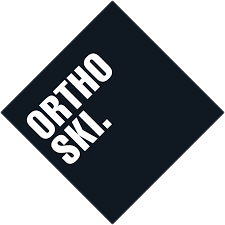What's the point of a ski biomechanical analysis? Is it important?
You bet your butt it is! Assessing you and identifying your body's functional strengths and limits is key to getting you in the correct boot set-up. Your ski equipment has a huge influence on the way you ski and your enjoyment on the hill, so a good set-up is vital.
Let's start by having a quick look at...
THE BASIC MECHANICS OF A SKI
This is how a ski is supposed to work - it's what the designers intend it to do on the mountain.
A ski is designed to work in two ways.
Running straight and dead-flat on the snow.
Skis are designed to aquaplane. Water freezes at a lower temperature when pressure is increased.
The ski places pressure on the snow and melts it a tiny bit. A thin layer of water forms under the ski, reducing friction and allowing it to glide easier or aquaplane.
NOTE: There are arguments that it's the fiction that melts the snow rather than the pressure. Perhaps this is a question for Triple J's Dr Karl?Running on its edge.
We all know our skis spend more time on their edges than dead flat. So let's look into this a little more.
When a ski turns, that's when it wants to be on a knife edge and the side cut and radius of the ski come into play.
When the ski is on its edge, the differential between the tip, waist and tail mean it needs to flex in order to maintain contact on the snow. The ski becomes an arc of a circle.
Initiating the turn with more relative weight at the tip allows the ski to bite into the snow properly and create a path for the rest of the ski to follow along. If this doesn't happen and the ski is weighted more evenly along its length, you'll get juddering. Ick.
As you push through to the end of your turn, your weight will ideally be slightly more on the tail to allow the rebound in the ski to give you some kick and propel you into the next turn. Popping into the next turn is the best! It's when you feel that sweet spot.
SO HOW DOES THIS TRANSLATE BACK TO MY BIOMECHANICS?
It's super important to understand how a ski needs to work in order to make sure we accommodate you in your equipment to allow the ski to work for you.
Deciding your correct set up (and correct boot structure) is determined by how your body works - your biomechanics. The right equipment is particularly important for women. Women generally don't have the muscle bulk to be able to fight with their equipment. Their equipment needs to work with them, not against them, to allow their technique to rule their skiing. Men are a little more dense.
Here are just some of the important aspects of your body's motion and function that we assess:
Ankle dorsiflexion (how much movement you have from your ankle being flat on the ground to moving upwards towards your shin)
Foot posture - the angles your foot/ankle are in when you're standing normally
Flexibility and shape of your arch
Knee angle - whether you're a bit or a lot lot knock kneed / bow legged
Foot flexibility and angle between the forefoot and rear foot
General morphology / body shape
We look at all these (and more) to decide which boot structure will support and accommodate you in your skiing. For example, if you have very limited ankle dorsiflexion, you will need a stiffer boot, even if you're a beginner skier (crazy, I know!). This is because you only have a small range of motion to work with to be able to put pressure on the tip of the ski, so you need that stiffer boot to translate your limited movement. Boot flexion is soooooooo important to get right, in fact we think it's almost the holy grail-aspect of boot fitting, so much so we wrote a whole blog post on it here.
Getting the right boot is the firt step in you controlling your ski and ripping it up on the mountain. Or enjoying your day cruising from chalet to chalet. Either way, knowing how your body works is the key to getting you in the right boot and having a blast on the mountain. The next step is the right ski orthotic.

